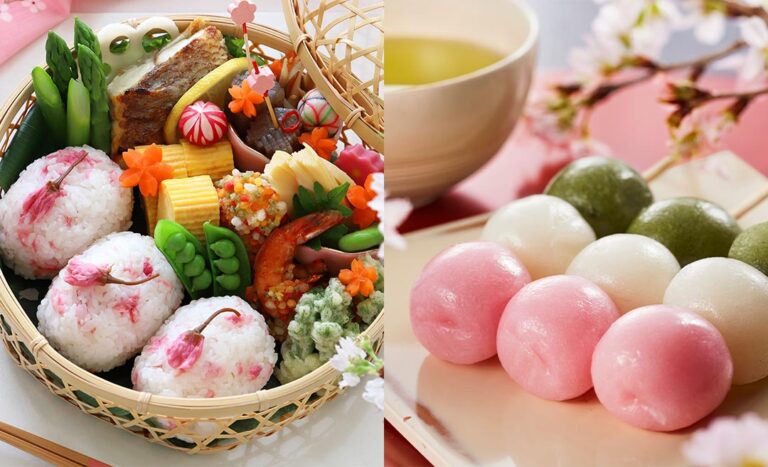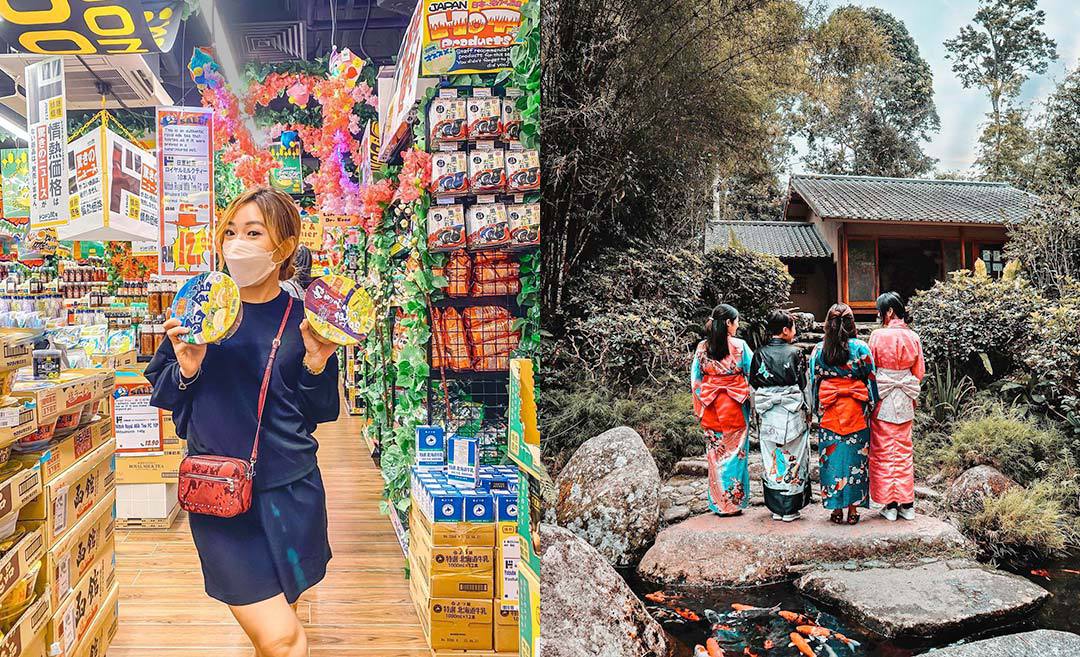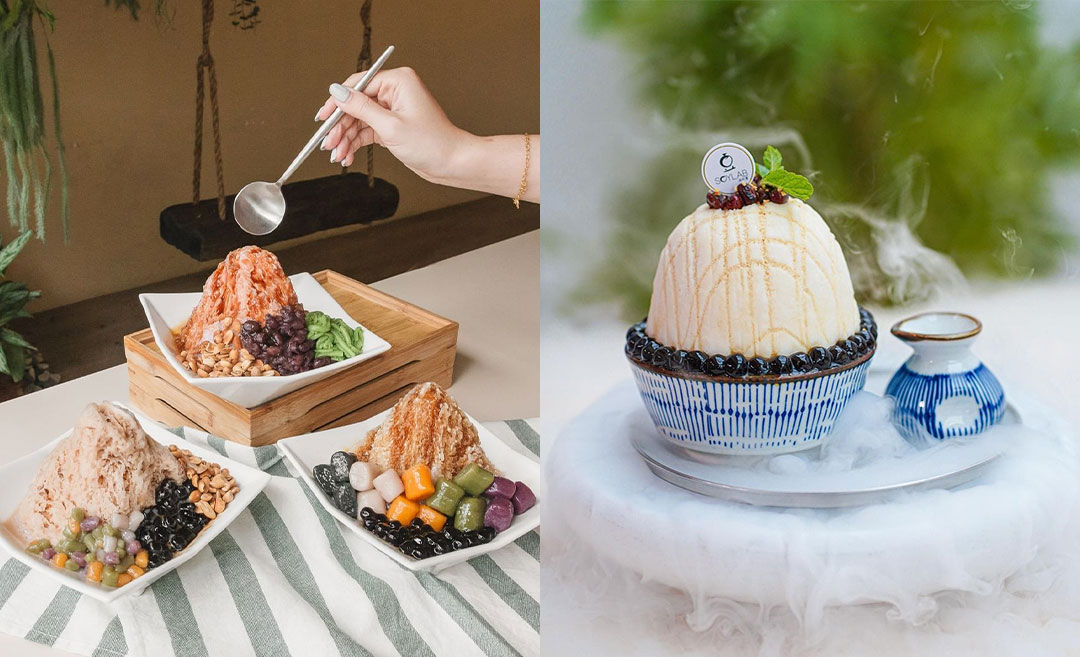Hanami, or cherry blossom viewing, is an annual spectacle in Japan. Come spring, people gather beneath cherry trees for picnics and enjoy the sakura season’s splendour with loved ones.
Once the preserve of nobility, the practice has grown in popularity since the Edo period. The tradition is so important that the Japan Meteorological Corporation releases an annual cherry blossom forecast to enable people to plan their outings.
Inspired by the season’s transitory nature, Japanese cooks have also devised multiple ways to infuse food and drink with cherry blossom leaves and petals.
While every year brings new, innovative sakura-inspired culinary creations, no hanami picnic is complete without the classics.
1. Hanami dango
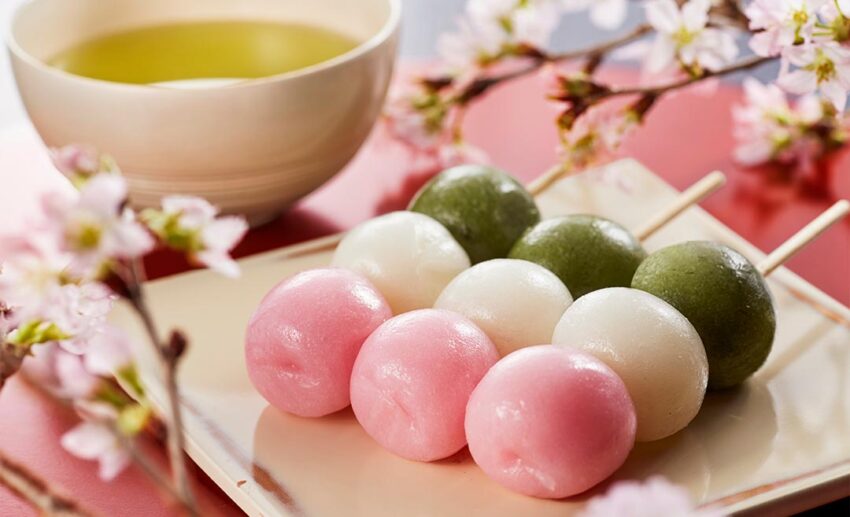
This tri-coloured skewered treat has become so synonymous with cherry blossom season that it has its very own emoji.
The bouncy mini dumplings made with mochiko or sweet glutinous rice flour are a tasty take on dango, a popular snack available in sweet or savoury iterations.
To represent the transition from winter to spring, the dough balls are coloured green, white, and pink – green like spring leaves, pink for cherry blossoms, and naturally white dango to symbolise the last of the winter’s snow.
The tinted spheres are boiled and threaded through bamboo skewers in a particular order of colours – green, white, and pink.
2. Chomeiji sakura mochi
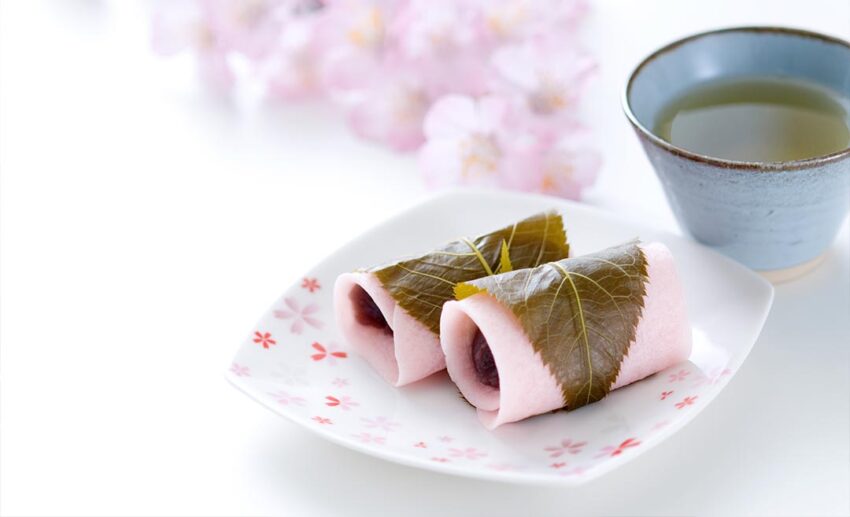
This is one of two variants of sakura mochi, a popular wagashi (Japanese traditional sweet) also eaten for Hinamatsuri, which celebrates the health and happiness of young girls.
This confection traces its origins to the Chomeiji temple north of Tokyo’s Sumida Park, a popular spot for cherry blossom viewing. While sweeping the grounds here, temple gate guard Shinroku Yamamoto struck upon the idea of using sakura leaves to wrap mochi, leading to the invention of a new delicacy.
This treat features a morsel of sweetened anko or red bean paste ensconced within a glutinous rice crepe wrapped in a cherry blossom leaf.
The best place to sample the original recipe is at Yamamotoya, a confectionery just outside the temple that has been making chomeiji sakura mochi for over 300 years.
3. Domyoji mochi
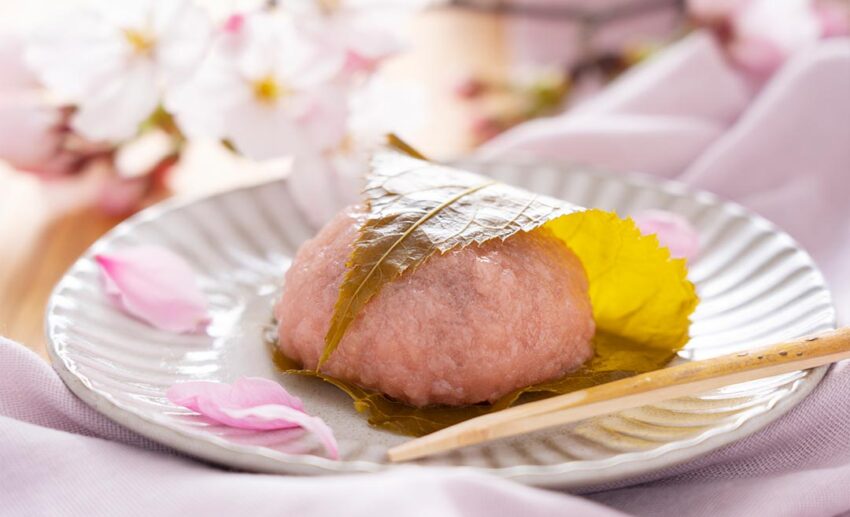
The other popular sakura mochi originates to the west in Kansai, the cultural heart of Japan.
Domyoji mochi are chewy orbs featuring domyojiko, a coarse flour made from crushed glutinous rice where the grains are still visible.
The granular flour is combined with water and sugar and steamed to make this mochi. Once steamed, the sticky rice flour mixture is wrapped around red bean paste into rice balls.
For a final flourish, cherry blossom leaves are wrapped around the rice balls for presentation. While the leaves are edible, their grassy, vegetal flavour may be an acquired taste.
4. Sakura manju
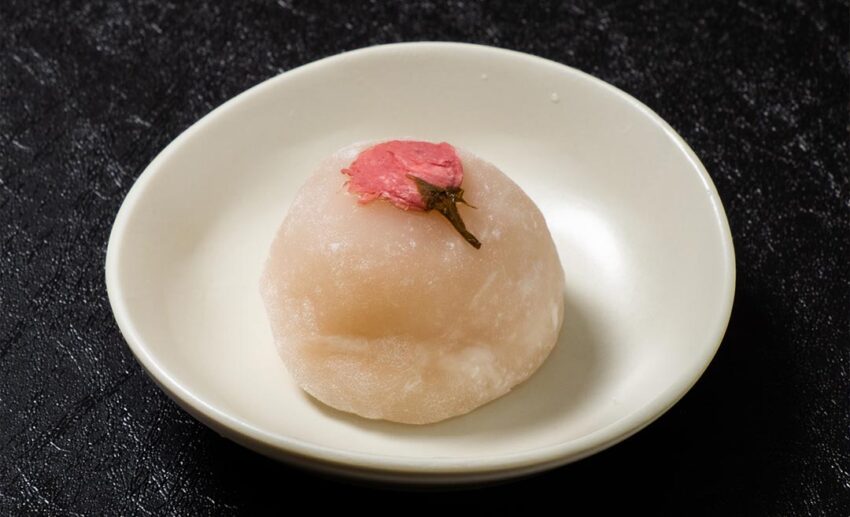
Bursting with sakura-scented anko, these pink-tinted buns are made with a yeasty wheat flour dough.
The pliable dough is rolled into circles large enough to contain a generous dollop of red bean paste infused with salt-cured and pickled cherry blossoms.
Young flower buds are typically salted and then pickled in plum vinegar to lock in their vibrant colour. These blossoms add acidity and a distinctive floral aroma to the otherwise saccharine red bean paste.
Once filled, the dough rounds are pinched shut and steamed until cooked. For twice the sakura goodness, pair the buns with sakurayu, a delicate cherry blossom tea.
5. Sakura yokan
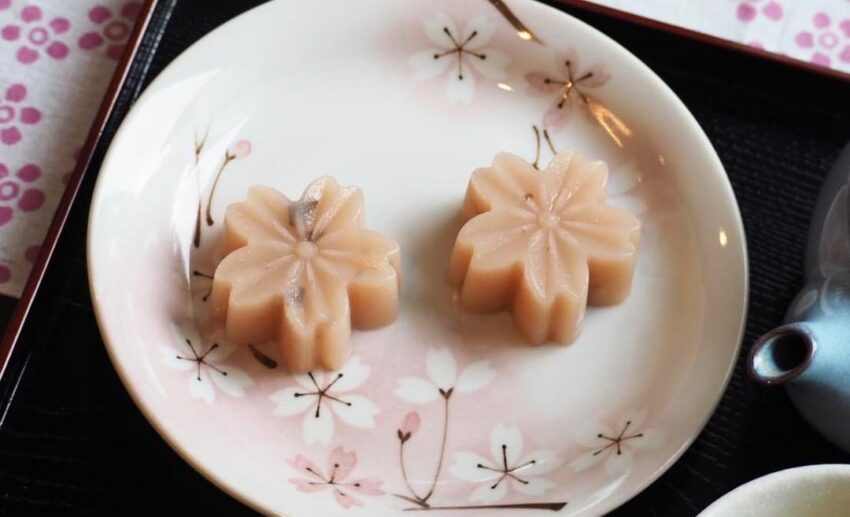
Introduced to Japan by Chinese monks over 800 years ago, yokan is a jelly dessert traditionally made with sweet red beans and agar.
Come springtime, this classic dessert is infused with the subtle flavour and fragrance of cherry blossoms. Instead of red beans, sakura yokan spotlights the more delicate sakura-an, a paste made with white beans and salt-cured sakura leaves.
To make this, agar powder and sugar are dissolved in simmering water and then combined with sakura-an. Once the mixture sets, it is ready to be cut and served.
Confectioners also produce layered jellies that feature a combination of flavours and layers embellished with pickled cherry blossoms.
6. Sakura anmitsu
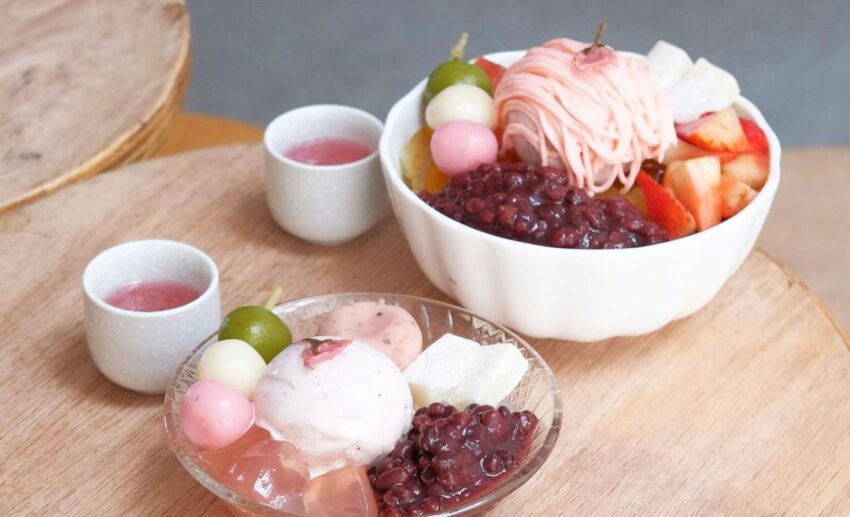
Who doesn’t love an iced treat? Instead of plain old ice cream, indulge in anmitsu, a dessert bowl that dates back to the Meiji era.
As Japanese cuisine places emphasis on seasonality, it’s only natural that cherry blossoms feature heavily in sakura anmitsu, a springtime favourite.
A delight for the eye and palate, this icy treat incorporates a melange of colourful ingredients, including cubes of agar jelly, red beans, mochi, and fresh fruit crowned with cherry blossom ice cream.
If that’s not enough, the dessert is drizzled with luscious kuromitsu or Japanese black sugar syrup.
7. Sakura cold noodles
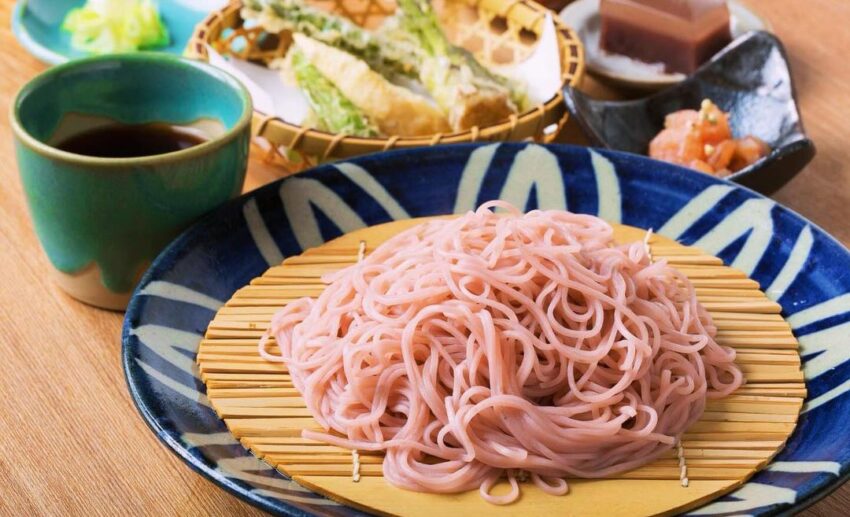
While many sakura season specialities fall into the sugary end of the spectrum, there are also savoury delights.
One such delicacy is sakura-flavoured cold noodles. Although cold noodles are a Japanese summer staple, coils of soba (buckwheat noodles) and somen (wheat flour noodles) infused with cherry blossoms are available in spring.
These pink-tinged strands are typically made with flour enriched by ground cherry blossom petals and a dash of food colouring.
The cooked noodles are served alongside tsuyu dipping sauce, a blend of soya sauce, mirin, sake, kelp, and dried bonito flakes.
8. Sakura onigiri
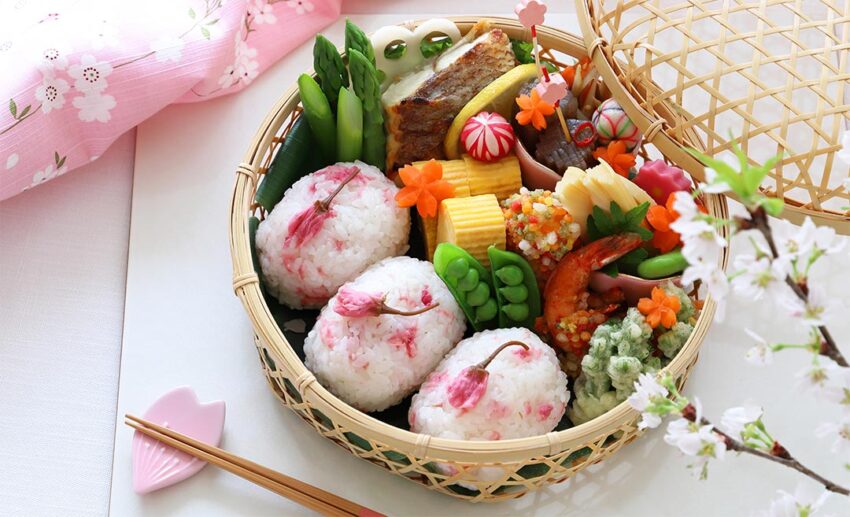
A twist on onigiri, a Japanese classic that consists of steamed rice compressed into bite-sized triangles or balls, sakura onigiri is studded with pickled cherry blossoms.
Japanese short-grain rice is steamed with finely chopped pickled blooms to make the dish, preferably of the multi-petaled Yaezakura variety.
Toasted white sesame seeds or furikake (rice seasoning) are tossed through the cooked grains before the rice balls are moulded.
A must-have for any hanami bento box, these flavourful, bite-sized morsels are perfect for snacking on while gazing up at a blanket of cherry blossoms.
This story by Chitra Santhinathan was originally published on AirAsia. Zafigo republished this story in full with permission from the publisher, simply because good stories should be read by as many people as possible! If you have stories that will be of interest and useful to women travellers, especially in Asia, please get in touch with us at [email protected].
